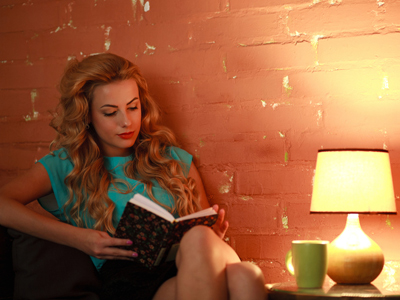
Ask the AI Tutor
Need help with Plot? Ask our AI Tutor!
AI Tutor - Lucy
Connecting with Tutor...
Please wait while we establish connection

Plot hooks usually appear at the beginning of a story to lure the reader in.
Plot
Plot is how a story’s events are arranged to create cause, effect, and tension. Learn how structure, conflict, and pacing steer readers through beginning, middle, and end.
1 .
Which texts have a plot?
Explanatory
Narrative
Persuasive
Argument
Narrative is story telling and stories have plots. Short stories, novels, drama and narrative poetry have plots
2 .
A plot needs...
a happy ending
comedy
conflict
tragedy
Conflict, in this sense, does not mean violent conflict (although there is plenty of that in stories). Conflict means any struggle; the struggle may be between ideas, between people, or between people and their environment. Conflict may also be internal, rather than external
3 .
Which of the following places plot structure in the correct order?
Exposition, rising action, climax, falling action, denouement
Rising action, exposition, climax, falling action, denouement
Denouement, rising action, climax, falling action, exposition
Rising action, denouement, falling action, exposition, climax
Stories usually devote more space to 'rising action', where conflict and complications occur, than to the 'falling action'
4 .
Which of the following terms means the 'resolution' of a plot?
Exposition
Rising action
Climax
Denouement
5 .
Which of the following describes a minor sequence of events taking place away from the central story line?
Postplot
Subplot
Preplot
Superplot
Subplots can be used to support the central theme, provide a contrast to the central theme, or otherwise comment on the rest of the story
6 .
Returning to past events, either in dream, memory or in a character's recollection.
Foreshadowing
Flashback
Backshadowing
Flashforward
7 .
An element of the plot which serves to draw readers in.
Summary
Voice
Falling action
Plot hook
Plot hooks usually appear at the beginning of a story to lure the reader in
8 .
A technique in which an event, subplot, word, symbol or episode suggests a future plot development.
Foreshadowing
Flashback
Backshadowing
Flashforward
9 .
How do plot and structure relate to one another?
Structure describes the ideas and themes found in a text; plot relates to events
Structure is the all-encompassing design of the whole text; plot is an element of structure
Structure includes only the characters in a novel; plot relates only to events
Structure and plot have exactly the same meaning
In a novel, structure includes chapter divisions and other organisational elements
10 .
How should plot be handled in an essay?
It's best to describe the entire plot in every detail from the beginning to the end
It's best to only mention the climax
It's best to only use those relevant events from the plot which will support your argument
It's best to ignore the plot and focus on the characters
Never summarise the entire plot of a story in an essay - you will bore your reader, who already knows the plot
**Unlimited Quizzes Await You! 🚀**
Hey there, quiz champ! 🌟 You've already tackled today's free questions.
Ready for more?
Ready for more?
🔓 Unlock UNLIMITED Quizzes and challenge yourself every day. But that's
not all...
not all...
🔥 As a Subscriber you can join our thrilling "Daily Streak" against other
quizzers. Try to win a coveted spot on our Hall of Fame Page.
quizzers. Try to win a coveted spot on our Hall of Fame Page.
Don't miss out! Join us now and keep the fun rolling. 🎉
**Unlimited Quizzes Await You! 🚀**
Hey there, quiz champ! 🌟 You've already tackled today's free questions. Ready for more?
🔓 Unlock UNLIMITED Quizzes and challenge yourself every day. But that's not all...
🔥 As a Subscriber you can join our thrilling "Daily Streak" against other quizzers. Try to win a coveted spot on our Hall of Fame Page.
Don't miss out! Join us now and keep the fun rolling. 🎉






